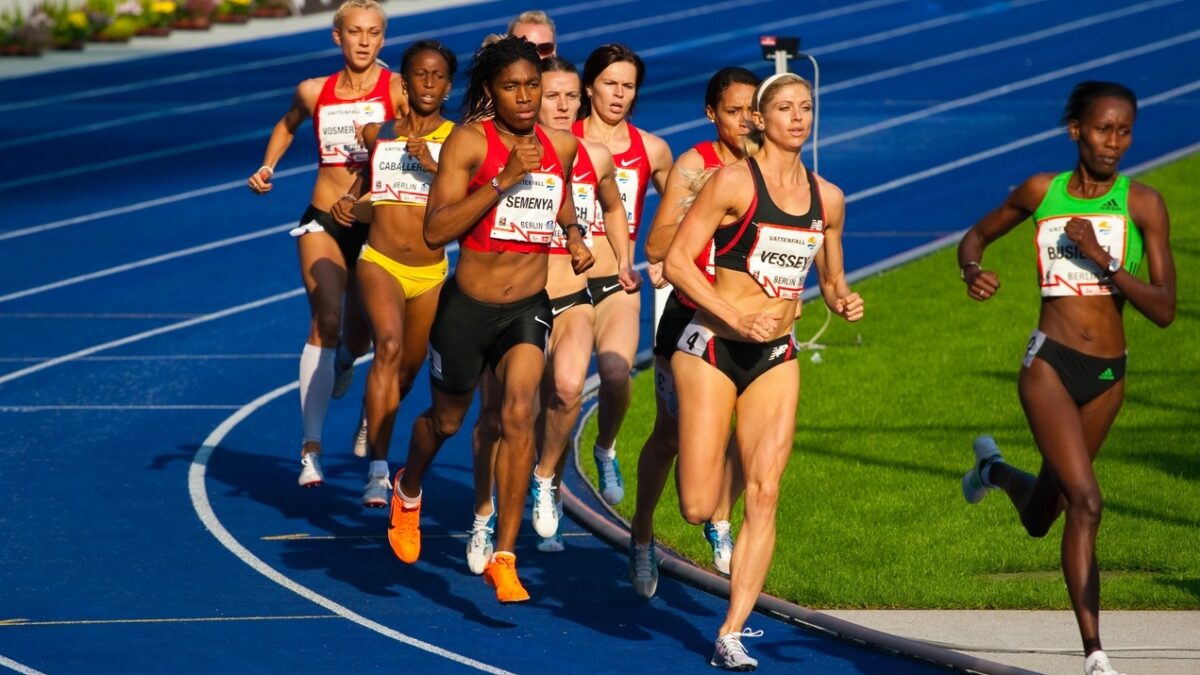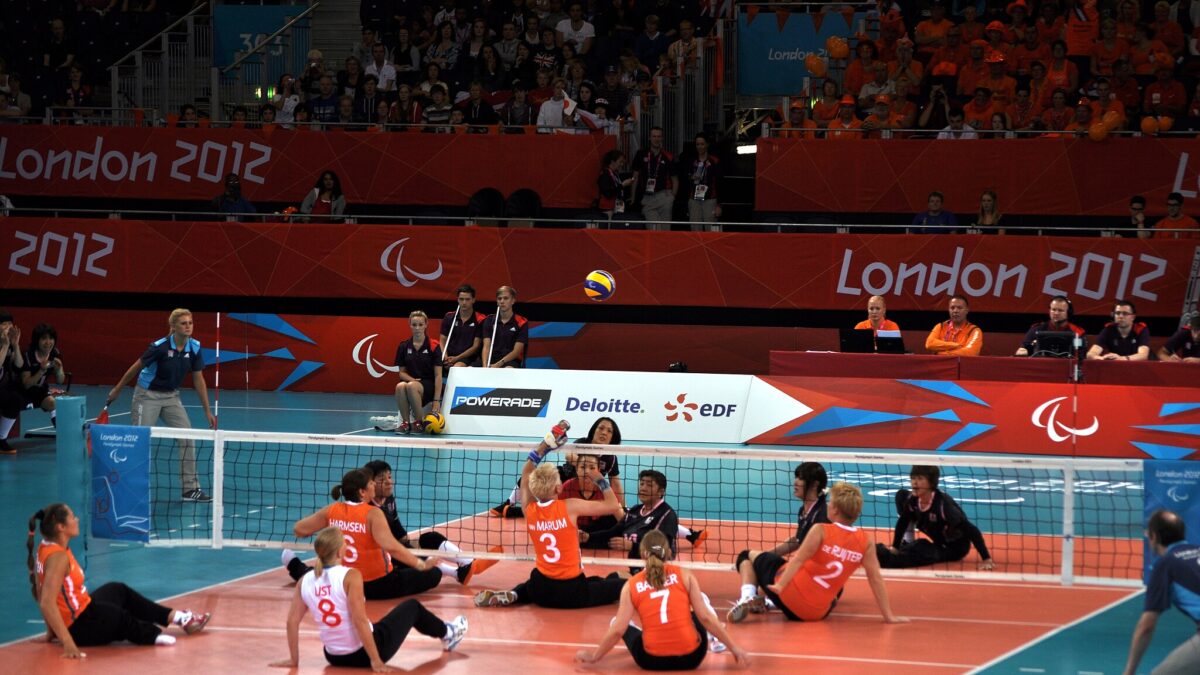The International Olympic Committee (IOC) developed its 2021 framework on sex and “gender” around the concepts of fairness, inclusion, and non-discrimination. This framework leaves it to each sport’s governing body “to determine how an athlete may be at a disproportionate advantage against their peers.” However, they admonish sports organizations against “targeted testing … aimed at determining [athletes’] sex, gender identity and/or sex variations.” Instead, it’s up to each sport to “[provide] confidence that no athlete within a category has an unfair and disproportionate competitive advantage.”
The IOC’s sophistic gymnastics to deny sex-based categories in sport prompted 26 researchers from around the world to rebut the IOC’s framework. Their paper, published last week in the Scandinavian Journal of Medicine & Science in Sports, is the latest peer-reviewed study providing evidence of the obvious about sex in sports.
The researchers reviewed studies from “evolutionary and developmental biology, zoology, physiology, endocrinology, medicine, sport and exercise science, [and] athletic performance results within male and female sport” to refute the IOC’s position that male athletes warrant “no presumption of advantage” over female athletes based on “biological or physiological characteristics.”
That statement “is ridiculous on its face,” says Kim Jones, co-founder of the Independent Council on Women’s Sports (ICONS). “This is the basic knowledge we all understand and see play out in front of our eyes every day. [This new] paper is brilliant at laying out how clear the differences are between men and women. There are thousands of differences between male and female development in humans across the entire maturity path that result in these huge performance gaps.”
John Armstrong, a mathematician at King’s College London who was not affiliated with this research, highlights this “central flaw” of the IOC’s framework. “To say we should not presume male advantage in a sport unless we have specific data for that sport is like saying that just because most of the apples in a tree have fallen to the ground, one shouldn’t presume the remaining apples are also subject to gravity,” he said.
“There is overwhelming evidence of male advantage from across different sports and there is little to be gained from demonstrating this again and again, sport by sport,” Armstrong noted.
The Illusion of Testosterone Suppression
But even sports that have copious research into sex differences in performance have permitted males to compete in the female category at all levels of competition and age. One path has been through misguided policies based on testosterone levels.
Over the last decade, various sports governing bodies — including the IOC and USA Boxing — have attempted to define females through testosterone levels. Those organizations relied heavily on a publication by Joanna Harper, a trans-identifying male medical physicist. The paper consisted of eight self-reports by trans-identifying male recreational runners who had suppressed their testosterone pharmacologically and recalled that they ran slower after doing so. Harper excluded the one respondent who said he ran faster and then concluded that males who were suppressing their testosterone could compete fairly in the female category.
Last week’s paper builds on research by lead authors Tommy Lundberg, Emma Hilton, and others who demonstrate the persistence of male advantage after testosterone suppression.
While testosterone suppression decreases various measures of anatomy, physiology, and physical performance, those changes are a small fraction of the differences between men and women on these metrics. A testosterone-suppressed male will have less muscle mass than his former self, but as a category, testosterone-suppressed men remain larger and stronger than women. Further, testosterone suppression does not change attributes like height, bone length, or hip and shoulder width.
Even before puberty, though, males outperform females in athletic competitions. Greg Brown is an exercise physiologist at the University of Nebraska at Kearney and was a co-author on the Lundberg paper. Brown recently published research based on national youth track and field championships. He found that by age 8, the boys ran faster in their final rounds than the girls did in theirs, at race distances from 100 meters to 1,500 meters.
When ‘Obvious’ Sex Differences Are Not Enough
Brown’s article came out a few months after John Armstrong (mentioned above), sociologist Alice Sullivan of University College London, and I published a paper on the role of sex versus gender expression in distance running. Having been on the receiving end of many tweets and articles saying, “Duh, obvious, did we need research to prove this?” I asked Brown if we really needed quantitative research to prove that boys run faster than girls.
“Some court cases regarding transgender athletes competing in girls’ sports said there’s no evidence of prepubescent sex-based differences. This kind of work does matter to inform policy. Moreover, it can be useful to evaluate the obvious because some of the things we take for granted as truth, maybe they’re not,” Brown said.
The obvious question in response to this accumulation of “obvious” data is: What will it take to restore and enforce sex-based categories in sports at all levels? Even if the International Olympic Committee aligned its policies with the Lundberg paper, the IOC is not binding on youth sports, grassroots sports, or even the NCAA.
Brown is optimistic about “the grassroots level, where girls and women’s sports will start being limited to female athletes. Some school districts and other local organizations are making female-only sports policies when state or higher-level organizations won’t.”
Brown noted the lawsuit against the NCAA by female athletes will “make those in charge of sports have second thoughts about their transgender inclusion policies. Before there was a fear of lawsuits from transgender activists, but now the shoe is on the other foot.”
He also called on “scholarly journals, sports science organizations, and sports scientists to speak out and keep the reality of sex-based differences in sports performance in the news to counteract the 20-year head start the transgender activists have.”
ICONS is funding the lawsuit that Brown mentioned. “We need people to realize there can be no fear and no shame in standing up for women. It’s a basic message that we all have the responsibility to communicate clearly,” said ICONS co-founder Kim Jones. “The stories of women and girls being robbed of fair sport, or even facing injury, are the path of change. It shouldn’t take women and girls being hurt, but everyone has the clear evidence.”
Jon Pike, a sports philosopher and a co-author of the Lundberg paper, advises sports organizations to look to the evidence and not to the IOC.
“They are training and developing athletes who aspire to international competition. They owe female athletes the same level playing field that they will get at the international level. Female athletes at all levels are entitled to fair sport,” he said.
Objective empirical data that accord with everyday experience and observation are the most powerful counters to the emotion, rhetoric, and threats that often accompany attempts to deny the validity of female-only spaces and categories.
The value of studies like those of Lundberg, Brown, Armstrong, and their respective colleagues will play out in board rooms and courtrooms, not to mention the living rooms where so many grassroots sports decisions are made. The more decision-makers can rely on research rather than earnest but shallow plaints of “But it’s obvious!” the more women and girls will flourish in fair and competitive sports.









